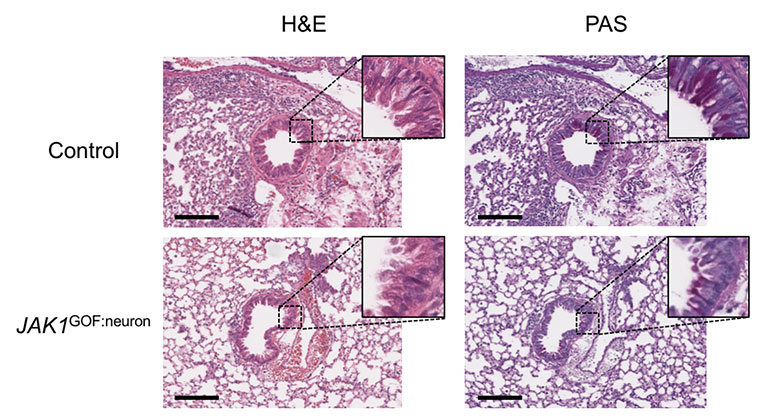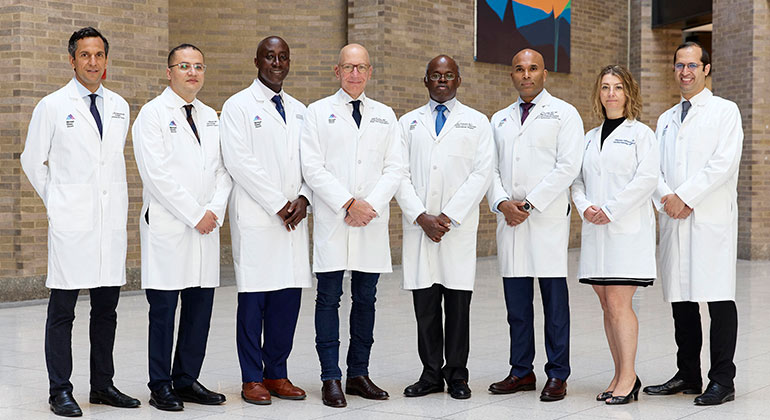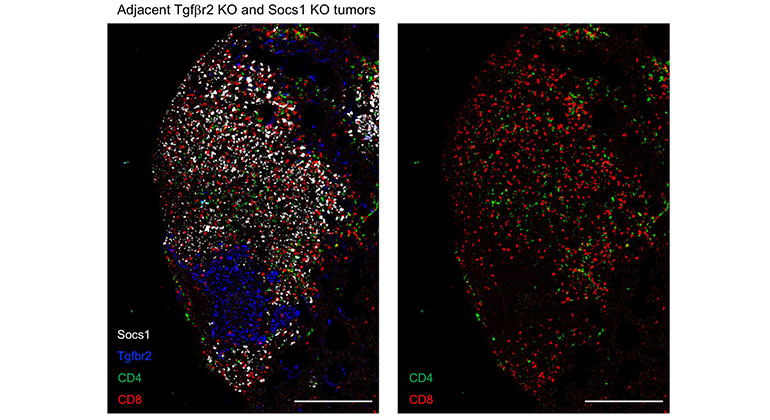Using “Big Data” to Combat Influenza
An international team of academic and pharmaceutical scientists have tapped into publically available large-scale ‘Omics’ databases to identify new targets to treat influenza — the virus that causes annual epidemics and occasional pandemics. The study, published today in Cell Host and Microbe, reflects a breakthrough approach using advanced computational designs to identify new factors that can be targeted to prevent viruses from spreading. The research team also created a website with open access for scientists to cull additional host-targets to develop the next-generation of anti-influenza drugs.
“Traditionally, physicians have treated the flu with drugs that directly block the influenza virus,” said Sumit Chanda, Ph.D., co-senior author and director of the Immunity and Pathogenesis Program at Sanford Burnham Prebys Medical Discovery Institute (SBP). “Although these drugs have been helpful, many patients fail to respond because viruses, especially influenza A virus (IAV), can mutate, rendering them resistant to available drugs. Our research efforts are focused on finding unalterable host molecules—the ones within our bodies—that viruses hijack to spread and create full blown infections.”
Influenza viruses cannot replicate on their own. They can only carry a few genes—about a dozen or so—compared to a human genome comprising more than 20,000 genes. To ensure their survival, flu viruses rely on co-opting molecular machines in the infected host, which they use to their advantage to grow and spread. In recent years, researchers have sought to turn the tables and fight viruses by blocking their access to host molecules.
By integrating multiple IAV host-pathogen ‘Omics’ databases, including one generated by the work in this study, the research team identified 20 previously unrecognized host proteins required for IAV replication. One protein, UBR4, was singled out as a pivotal host protein that the virus uses to bud off from the host cell membrane and form spherical vesicles that transmit the virus within and between individuals.
The study showed that blocking UBR4 in human cells (in vitro) and mice (in vivo) reduced IAV replication and pathogenesis, establishing proof-of-concept of the strategy to target UBR4 as an influenza treatment.
“Our work illustrates how the computational analysis of large datasets from multiple independent studies can reveal novel host factors and networks involved in virus replication as potential targets for therapeutic intervention,” said Adolfo Garcia-Sastre, Ph.D., director of the Global Health and Emerging Pathogens Institute at the Icahn School of Medicine at Mount Sinai. “’Big data’ is no longer merely a catchphrase – it is a real tool to help scientists address the world’s most serious public health threats.”
The research team has created a simplified, user-friendly web portal (www.metascape.org/IAV) of the integrated data that reflects the biochemical landscape of essential influenza-host interactions. The site enables customized queries and analysis tools to find host proteins likely to play a role in influenza infection.
“Recent waves of new technologies have allowed scientists to generate unprecedented quantities of data about human disease. But now, there exists an equally large gap between those that are producing and analyzing these data, and those that apply the data for therapeutic benefit.
“We anticipate that the approach described in this study, which is packaged as an accessible web interface, will provide a bridge for those on the frontlines of biomedical discovery and therapeutic development to leverage ‘big data’ and achieve transformative treatments for unmet medical needs, said Chanda”
The study was also led by Drs. Renate Konig of the Paul-Ehrlich-Institut (Germany) and Silke Stertz at the University of Zurich (Switzerland), and performed in collaboration with the Icahn School of Medicine at Mount Sinai, Sanford Burnham Prebys Medical Discovery Institute, Genomics Institute of the Novartis Research Foundation, Oregon State University, University of Massachusetts Medical School, Harvard Medical School, Howard Hughes Medical Institute, University of Texas Southwestern Medical Center, Columbia University, Massachusetts General Hospital, Paul-Ehrlich-Institut, Max Planck Institute for Infection Biology, University of Zurich, UC San Francisco, and the German Center for Infection Research.
The study was supported by NIAID research grant U19 AI106754, the Swiss Nation Science Foundation, the AXA Research Fund, National Institute of Health P50 GM085764, 1R01AI091786 from the National Institute of Allergy and Infectious Diseases of the National Institute of Health, the Burroughs Wellcome Fund, and the Bill and Melinda Gates Foundation.
About the Mount Sinai Health System
Mount Sinai Health System is one of the largest academic medical systems in the New York metro area, with more than 43,000 employees working across eight hospitals, over 400 outpatient practices, nearly 300 labs, a school of nursing, and a leading school of medicine and graduate education. Mount Sinai advances health for all people, everywhere, by taking on the most complex health care challenges of our time — discovering and applying new scientific learning and knowledge; developing safer, more effective treatments; educating the next generation of medical leaders and innovators; and supporting local communities by delivering high-quality care to all who need it.
Through the integration of its hospitals, labs, and schools, Mount Sinai offers comprehensive health care solutions from birth through geriatrics, leveraging innovative approaches such as artificial intelligence and informatics while keeping patients’ medical and emotional needs at the center of all treatment. The Health System includes approximately 7,300 primary and specialty care physicians; 13 joint-venture outpatient surgery centers throughout the five boroughs of New York City, Westchester, Long Island, and Florida; and more than 30 affiliated community health centers. We are consistently ranked by U.S. News & World Report's Best Hospitals, receiving high "Honor Roll" status, and are highly ranked: No. 1 in Geriatrics and top 20 in Cardiology/Heart Surgery, Diabetes/Endocrinology, Gastroenterology/GI Surgery, Neurology/Neurosurgery, Orthopedics, Pulmonology/Lung Surgery, Rehabilitation, and Urology. New York Eye and Ear Infirmary of Mount Sinai is ranked No. 12 in Ophthalmology. U.S. News & World Report’s “Best Children’s Hospitals” ranks Mount Sinai Kravis Children's Hospital among the country’s best in several pediatric specialties.
For more information, visit https://www.mountsinai.org or find Mount Sinai on Facebook, Twitter and YouTube.

New Insights Revealed On Tissue-Dependent Roles of JAK Signaling in Inflammation
Dec 21, 2023 View All Press Releases





